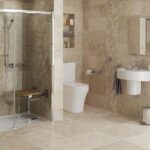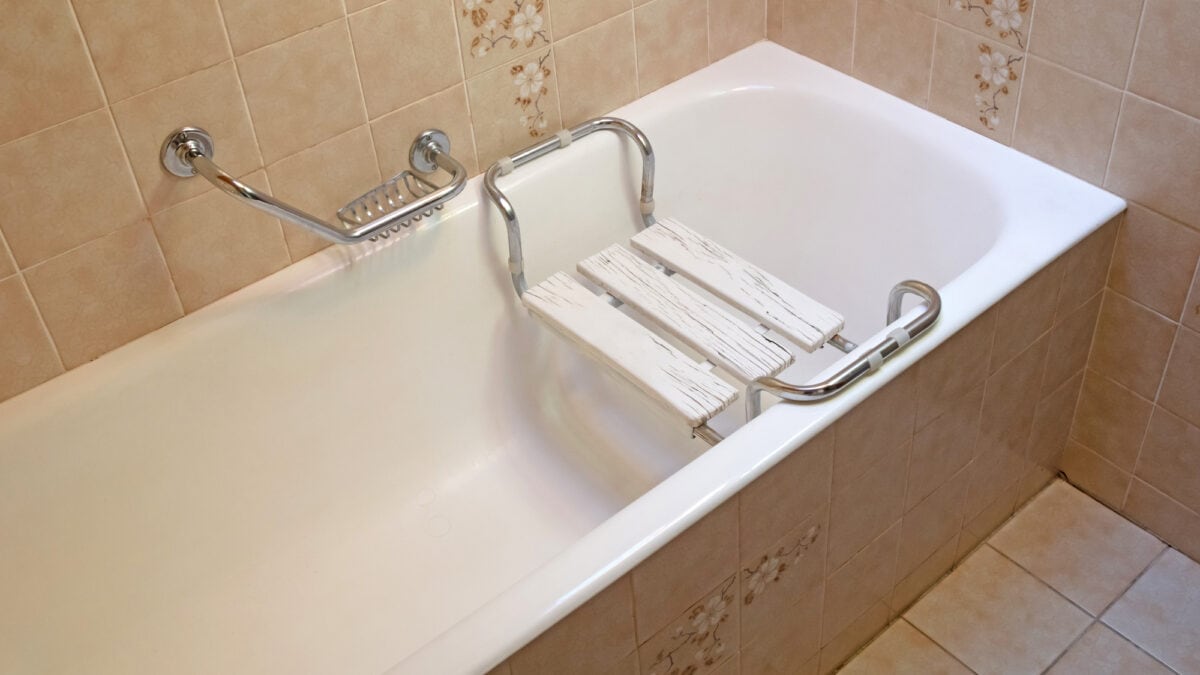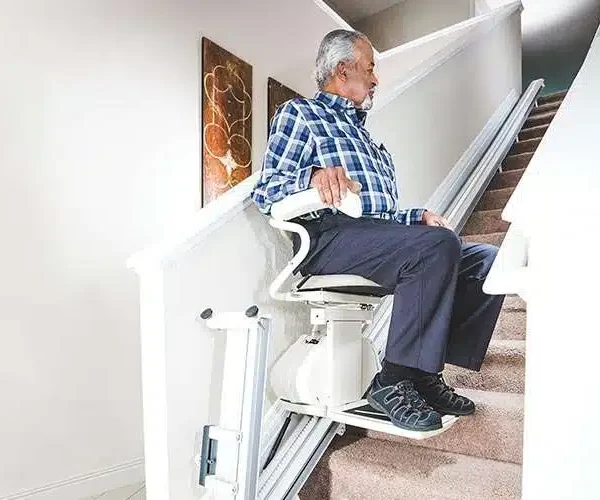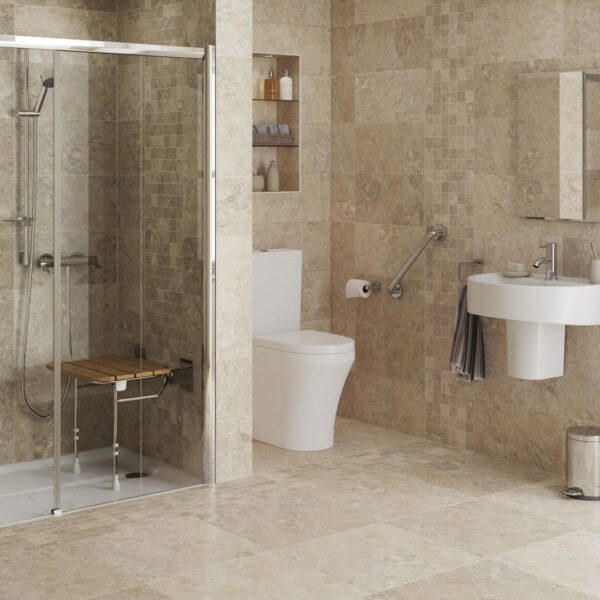
A Barrier-Free Oasis: Creating Your Dream Accessible Bathroom
October 15, 2024
A Guide for Senior’s who wish to Age-in-Place at home
November 19, 2024In recent years, the design of accessible bathtubs has evolved to offer homeowners both functionality and style. These bathtubs are no longer just for individuals with mobility challenges—they are becoming popular for anyone who wants to future-proof their home and create a more comfortable bathing experience. Accessible bathtubs are redefining bathroom spaces, making them more inclusive, safer, and aesthetically pleasing. Whether you’re planning to age in place, assisting a loved one, or simply looking to enhance your bathroom, an accessible bathtub could be the perfect addition to your home.
In this blog, we’ll explore the benefits of accessible bathtubs, the different types available, design considerations, and how to incorporate them into your bathroom seamlessly. Read on to discover how accessible bathtubs can transform your bathing experience and your entire bathroom space.
For many people, the bathroom can be one of the most challenging areas of the home to navigate. Standard bathtubs with high walls and slippery surfaces pose a risk for slips, falls, and injuries, especially for seniors and individuals with limited mobility. Accessible bathtubs, however, are designed to eliminate these risks while maintaining a luxurious and comfortable bathing experience. From walk-in tubs with watertight doors to low-threshold tubs that make stepping in and out easy, these solutions are helping to redefine what it means to “bathe with ease.”
Creating a functional and beautiful bathroom is possible with today’s accessible bathtub designs. Whether planning a full bathroom, remodeling or upgrading your tub, this guide will provide the information you need to make an informed decision and create a space that works for everyone.
1. The Benefits of Accessible Bathtubs
Accessible bathtubs offer numerous benefits beyond just ease of use. They combine safety, comfort, and style to create a more inclusive environment for users of all ages and abilities. Here are some key benefits:
- Safety: The primary reason for choosing accessible bathtubs is to enhance safety. Standard tubs with high edges can be hazardous, especially for those with limited mobility. Accessible bathtubs, with their low-threshold or no-threshold entries, grab bars, non-slip surfaces, and built-in seating, provide a secure bathing environment for everyone, instilling a sense of protection and peace of mind.
- Independence: For people with mobility challenges, accessible bathtubs allow for greater independence in daily life. Features such as walk-in doors, built-in seats, and handheld showerheads make it possible to bathe without assistance, fostering a sense of autonomy and dignity.
- Comfort: Accessible bathtubs are designed with comfort in mind. Many models come with ergonomic seating, hydrotherapy options, heated surfaces, and whirlpool features that provide a relaxing, spa-like experience. These tubs are ideal for individuals with arthritis, joint pain, or other conditions that benefit from warm water therapy, offering a sense of relaxation and comfort.
- Aesthetic appeal: Accessible bathtubs are no longer purely functional and unattractive. Today’s designs are sleek, modern, and customizable, allowing you to match your tub to the overall design of your bathroom. With various finishes, materials, and styles to choose from, you can create a functional and visually appealing bathroom, instilling a sense of pride and satisfaction in your home’s design.
- Future-proofing: Installing an accessible bathtub is a smart investment in your home, especially if you’re planning to age in place. By incorporating accessible features now, you can ensure your bathroom will meet your needs as you get older, reducing the need for costly renovations down the line.
2. Types of Accessible Bathtubs
Accessible bathtubs come in a variety of styles, each designed to meet specific needs. Understanding the different types available can help you choose the right option for your home:
- Walk-in tubs: Walk-in tubs are one of the most popular options for accessible bathing. These tubs feature a door that opens to allow easy entry without the need to step over a high edge. Once inside, users can sit on a built-in seat, close the watertight door, and fill the tub for a full-body soak. Walk-in tubs often come with additional features such as whirlpool jets, heated seating, and handheld showerheads.
- Slide-in tubs: Slide-in tubs are similar to walk-in tubs but are designed for users who need to transfer from a wheelchair or mobility device. These tubs have a seat that extends outside the tub, allowing users to slide in and out with ease. This design makes it an excellent choice for people with more severe mobility challenges.
- Soaker tubs with low thresholds: Soaker tubs are designed for individuals who prefer a simple, relaxing bath without the need for special hydrotherapy features. Accessible soaker tubs have low-threshold entries, making it easy to step in and out. While they may not have all the bells and whistles of walk-in tubs, they provide a safe, comfortable bathing experience.
- Bathtub with lift systems: For individuals who require additional assistance with mobility, bathtubs with lift systems provide a solution. These systems use a mechanical chair or sling to lift users in and out of the tub safely. While more complex and typically requiring professional installation, bathtub lift systems offer a high level of support for those with significant mobility impairments.
- Combination bathtub-shower units: For those who prefer the flexibility of both a bathtub and a shower, combination units offer the best of both worlds. Accessible bathtub-shower combos feature walk-in doors, low thresholds, and handheld showerheads, allowing users to bathe in whatever way is most comfortable for them. These units are perfect for families with diverse needs or preferences.
Each type of accessible bathtub has its own set of features and advantages, so it’s important to consider your specific requirements when choosing the right model for your bathroom.
3. Design Considerations for Accessible Bathtubs
While the primary focus of an accessible bathtub is functionality, design should not be overlooked. With the right planning, you can create a bathroom that is both beautiful and practical. Here are some design considerations to keep in mind:
- Bathroom layout: Ensure that your bathroom layout allows for easy access to the bathtub. This includes having enough clearance around the tub for a wheelchair or walker, as well as space for caregivers if assistance is needed. If your current bathroom layout doesn’t accommodate an accessible tub, you may need to consider reconfiguring the space.
- Style and finishes: Modern accessible bathtubs come in a wide range of finishes, allowing you to match the tub to your bathroom’s overall aesthetic. Choose from options like sleek acrylic, textured stone, or elegant ceramic to create a look that blends seamlessly with your existing decor.
- Lighting: Proper lighting is essential in an accessible bathroom. Install bright, even lighting around the bathtub to enhance visibility and reduce the risk of accidents. Consider adding LED lighting strips around the edges of the tub or motion-activated lights for additional safety.
- Storage: Make sure you have easy access to bath essentials like soap, shampoo, and towels. Built-in shelves or storage niches inside the bathtub can keep these items within arm’s reach. For a more streamlined look, consider recessed shelving or wall-mounted storage units.
- Grab bars and non-slip surfaces: Safety features like grab bars and non-slip surfaces are essential in an accessible bathroom. Choose grab bars that match your tub’s finish for a cohesive look, and make sure to install non-slip flooring both inside and outside the tub.
With careful design considerations, your accessible bathtub can be both functional and stylish, seamlessly fitting into your bathroom while enhancing the overall space.
4. Incorporating Accessible Bathtubs into Your Bathroom Remodel
If you’re planning a bathroom remodel, now is the perfect time to incorporate an accessible bathtub into your design. Here are a few tips to ensure a smooth remodeling process:
- Consult a professional: While some accessible bathtubs can be installed as a DIY project, it’s often best to consult a professional, especially if your remodel involves major changes to plumbing, flooring, or the bathroom layout. A professional contractor or designer can help you navigate building codes and ensure that your new tub meets safety and accessibility standards.
- Plan for future needs: Even if you don’t currently need an accessible bathtub, it’s a good idea to consider future needs. Installing an accessible tub now can save you time and money down the road, especially if you plan to age in place. Consider features like grab bars, low-threshold entries, and handheld showerheads that can be added or upgraded over time.
- Budget for accessibility: Accessible bathtubs come in a range of prices, depending on the features and materials you choose. It’s important to factor accessibility features into your overall remodeling budget. While accessible bathtubs may require a higher upfront investment, the long-term benefits of safety, comfort, and independence are well worth the cost.
By incorporating an accessible bathtub into your remodel, you can create a bathroom that meets your needs now and in the future.
Accessible bathtubs are transforming the way we think about bathroom design. No longer purely functional, today’s accessible bathtubs are stylish, comfortable, and packed with features that enhance both safety and independence. From walk-in tubs with hydrotherapy options to sleek, low-threshold soaker tubs, there’s an accessible option for every home and every style.
If you’re looking to create a bathroom that meets the needs of all users while maintaining a luxurious feel, CAPS Remodeling is the perfect solution. Not only will it make bathing easier and safer, but it will also redefine your bathroom as a relaxing, barrier-free oasis. With the right design and features, you can create a space that allows you to bathe with ease and enjoy every moment.

Introducing Jeff Cates, the visionary Founder and Owner of CAPS Remodeling. After experiencing a profound personal event involving his son in 2007, Jeff was inspired to serve a higher purpose: to create safer, more comfortable, and independent living conditions for the elderly and disabled by modifying their current homes. Jeff’s deep-seated religious beliefs form the moral compass that steers CAPS daily operations. Apart from his unwavering dedication to his work, Jeff finds joy in boating and cherishing moments with his family.




